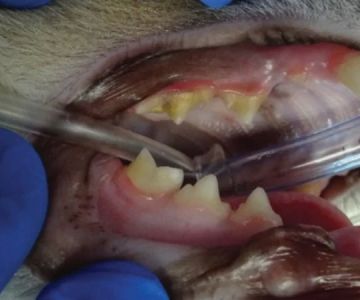How to Care for a Dog with Diabetes: A Complete Guide to Managing Diabetes in Dogs
- Understanding Diabetes in Dogs
- Symptoms of Diabetes in Dogs
- Diagnosing Diabetes in Dogs
- Managing a Diabetic Dog: Treatment and Care
- Diabetic Dog Diet: What to Feed Your Dog
- Insulin Injections for Dogs: What You Need to Know
- When to See a Vet for Your Diabetic Dog
Understanding Diabetes in Dogs
Just like humans, dogs can develop diabetes, a condition where the body either doesn’t produce enough insulin or can’t properly use the insulin it does produce. This leads to high blood sugar levels, which can have serious health consequences if left untreated. The most common type of diabetes in dogs is diabetes mellitus, and it is typically diagnosed in older dogs, though it can affect dogs of all ages and breeds.
Diabetes in dogs requires lifelong management, but with the right care, your dog can live a healthy and happy life. Understanding the condition and its effects on your dog is the first step to ensuring their well-being.
Symptoms of Diabetes in Dogs
The symptoms of diabetes in dogs can vary, but they often include:
- Excessive thirst (polydipsia)
- Frequent urination (polyuria)
- Increased hunger (polyphagia)
- Weight loss despite normal or increased appetite
- Cloudy eyes (cataracts)
- Lethargy or weakness
- Vomiting or changes in behavior
If you notice any of these signs in your dog, it’s important to consult with a vet right away. Early diagnosis and treatment are key to managing diabetes in dogs effectively.
Diagnosing Diabetes in Dogs
To diagnose diabetes, your vet will conduct several tests, including blood and urine tests. The presence of high blood sugar and the presence of glucose in the urine are strong indicators of diabetes. In some cases, your vet may also check for additional complications such as urinary tract infections, which can occur alongside diabetes.
If your dog is diagnosed with diabetes, don’t panic. With proper care and management, many diabetic dogs can live full, active lives.
Managing a Diabetic Dog: Treatment and Care
Once your dog is diagnosed with diabetes, treatment typically involves managing their blood sugar levels through insulin injections, a special diet, and regular vet check-ups. Managing diabetes in dogs requires consistency, patience, and attention to detail, but it is very manageable once you understand the routine.
1. Insulin Injections
Insulin injections are the cornerstone of diabetes treatment in dogs. Your vet will show you how to administer insulin at home. It’s crucial to give the right amount of insulin at the correct time to keep your dog’s blood sugar levels stable. Most dogs tolerate the injections well, and with practice, you’ll feel comfortable giving them.
2. Regular Vet Visits
Your dog will need regular check-ups to monitor their blood sugar levels and adjust their insulin dosage if necessary. These visits also allow the vet to check for any complications that may arise, such as cataracts, infections, or kidney problems.
3. Monitoring Your Dog’s Condition
In addition to vet visits, you should monitor your dog’s condition at home. Watch for changes in behavior, appetite, water consumption, or urination. Any drastic changes in these factors could indicate that your dog’s diabetes is not being properly managed, and it’s important to contact your vet if this happens.
Diabetic Dog Diet: What to Feed Your Dog
A proper diet is essential in managing your dog’s diabetes. The goal is to regulate your dog’s blood sugar levels and maintain a healthy weight. Your vet will likely recommend a specific diabetic dog food or provide guidelines on what to feed your dog. In general, a diabetic dog’s diet should include:
- High fiber content to help stabilize blood sugar levels
- Moderate protein to maintain muscle mass
- Low fat to reduce the risk of obesity
- Consistent meal times to prevent blood sugar spikes
It’s also important to avoid giving your dog treats or table scraps that can affect their blood sugar levels. Consistency in feeding times and food types is key to managing their condition.
Insulin Injections for Dogs: What You Need to Know
Insulin injections are a critical part of managing diabetes in dogs. Your vet will explain the proper dosage, timing, and technique for administering insulin. Most dogs require insulin injections twice a day, and they should be given with meals to help regulate blood sugar levels.
It may seem intimidating at first, but most pet owners quickly become comfortable with giving their dogs insulin injections. The process is generally simple and involves injecting the insulin into the subcutaneous tissue (just under the skin). Your vet can guide you through the entire process to ensure you are confident in your ability to care for your dog’s diabetes at home.
When to See a Vet for Your Diabetic Dog
If your dog’s condition worsens or you notice symptoms like vomiting, lethargy, or changes in appetite, it’s important to visit your vet as soon as possible. Managing a diabetic dog’s health is a continuous process, and staying on top of their condition with regular check-ups is key to preventing complications.
At Hidden Brook Veterinary, our team of experts is here to help guide you through every step of caring for your diabetic dog. With the right knowledge, tools, and support, you can help your dog lead a happy, healthy life despite their condition.












